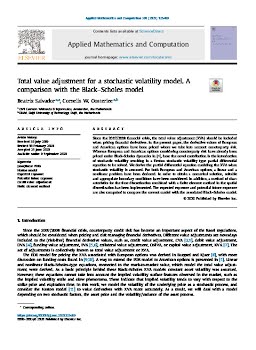2021-02-15
Total value adjustment for a stochastic volatility model. A comparison with the Black–Scholes model
Publication
Publication
Applied Mathematics and Computation , Volume 391 p. 125489
Since the 2007/2008 financial crisis, the total value adjustment (XVA) should be included when pricing financial derivatives. In the present paper, the derivative values of European and American options have been priced where we take into account counterparty risk. Whereas European and American options considering counterparty risk have already been priced under Black-Scholes dynamics in [1], here the novel contribution is the introduction of stochastic volatility resulting in a Heston stochastic volatility type partial differential equation to be solved. We derive the partial differential equation modeling the XVA when stochastic volatility is assumed. For both European and American options, a linear and a nonlinear problem have been deduced. In order to obtain a numerical solution, suitable and appropriate boundary conditions have been considered. In addition, a method of characteristics for the time discretization combined with a finite element method in the spatial discretization has been implemented. The expected exposure and potential future exposure are also computed to compare the current model with the associated Black–Scholes model.
| Additional Metadata | |
|---|---|
| , , , , , | |
| doi.org/10.1016/j.amc.2020.125489 | |
| Applied Mathematics and Computation | |
| Organisation | Centrum Wiskunde & Informatica, Amsterdam (CWI), The Netherlands |
|
Salvador Mancho, B., & Oosterlee, K. (2021). Total value adjustment for a stochastic volatility model. A comparison with the Black–Scholes model. Applied Mathematics and Computation, 391. doi:10.1016/j.amc.2020.125489 |
|


